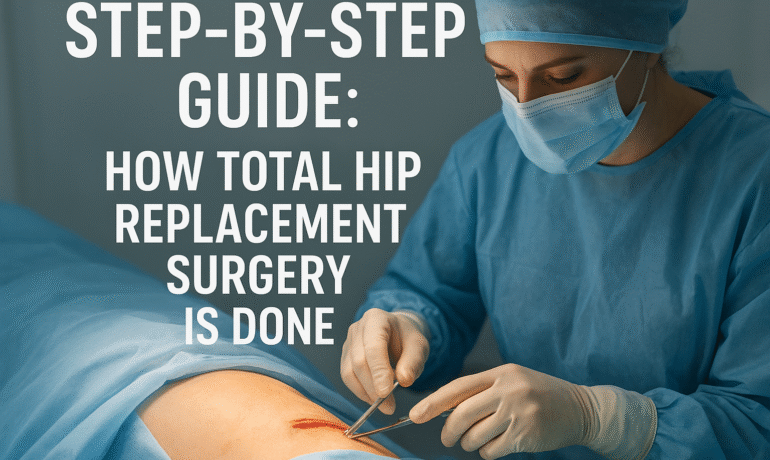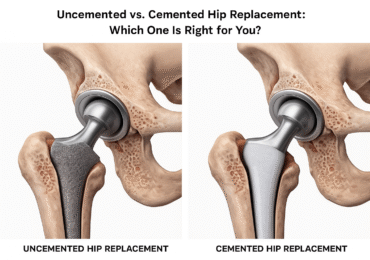Total Hip Replacement Surgery is a life-changing procedure for people suffering from severe hip joint pain due to osteoarthritis, rheumatoid arthritis, or hip fractures. It helps restore mobility, relieve pain, and improve quality of life. This detailed guide explains how total hip replacement surgery is done, the preparation, procedure steps, and recovery process to help patients feel informed and confident.
1. Understanding Total Hip Replacement
In a total hip replacement, the damaged bone and cartilage of the hip joint are removed and replaced with artificial components called hip implants. The artificial joint usually includes a metal stem, a ceramic or metal ball, and a plastic or ceramic socket that fit together smoothly to mimic natural movement.
2. When Is Hip Replacement Needed?
This surgery is recommended when non-surgical treatments like physiotherapy, pain medications, and injections fail to reduce chronic hip pain. Common causes include:
Osteoarthritis causing joint wear and tear
Avascular necrosis leading to bone death
Hip fractures that limit daily activity
Inflammatory arthritis damaging the joint
3. Preoperative Preparation
Before the procedure, patients undergo blood tests, X-rays, and an MRI scan to assess joint damage. The orthopedic surgeon discusses the surgery plan, anesthesia options, and expected outcomes. Maintaining good health, controlling diabetes, and stopping smoking can improve surgical recovery.
4. Step-by-Step Hip Replacement Procedure
Step 1: Administering Anesthesia
The procedure begins with spinal or general anesthesia to ensure the patient feels no pain.
Step 2: Incision and Exposure
A small incision (8–10 cm) is made along the hip side or front to access the joint.
Step 3: Removing the Damaged Bone
The surgeon removes the damaged femoral head (top of the thigh bone) and cleans the socket.
Step 4: Implant Placement
A metal cup is fixed into the hip socket, and a liner is inserted for smooth movement. The femoral stem is placed inside the thigh bone with a new artificial ball attached.
Step 5: Closing the Incision
Once alignment is confirmed, the incision is closed with sutures, and a sterile dressing is applied.
5. Post-Surgery Recovery
Patients are encouraged to start walking with support within 24 hours. Physiotherapy plays a vital role in regaining strength and mobility. Follow-up visits ensure proper healing, implant positioning, and pain management.
6. Benefits of Hip Replacement Surgery
Significant pain relief
Improved joint mobility
Enhanced walking ability
Long-lasting results with modern implants
Better overall quality of life
7. Potential Risks and Complications
Though rare, risks may include infection, blood clots, or implant loosening. Choosing an experienced orthopedic surgeon minimizes these issues and ensures a smoother recovery.
Conclusion
Total hip replacement surgery provides long-term relief for people with advanced joint damage. With advanced technology and skilled surgeons, recovery outcomes are highly successful.
For expert evaluation and personalized care, consult our Dr. Vinay Ortho Care for advanced hip and joint replacement solutions.
Regain mobility and live pain-free—trust Dr. Vinay Ortho Care for safe and effective hip replacement treatment.



